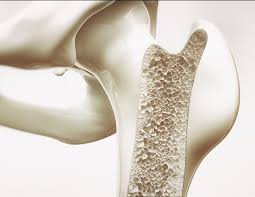
Breaking News
 Wash Post Editorial Board Turns Against Climate Agenda?!
Wash Post Editorial Board Turns Against Climate Agenda?!
 One Year Ago I Predicted and Described in Detail Huge Mars AI Plans that Elon Musk Confirmed...
One Year Ago I Predicted and Described in Detail Huge Mars AI Plans that Elon Musk Confirmed...
 British Teachers To "Spot Misogyny" In Boys And Target Them For Reeducation
British Teachers To "Spot Misogyny" In Boys And Target Them For Reeducation
 Democrats Refuse To Release Post-Mortem Of 2024 Election Loss, DNC Chair Says
Democrats Refuse To Release Post-Mortem Of 2024 Election Loss, DNC Chair Says
Top Tech News
 This tiny dev board is packed with features for ambitious makers
This tiny dev board is packed with features for ambitious makers
 Scientists Discover Gel to Regrow Tooth Enamel
Scientists Discover Gel to Regrow Tooth Enamel
 Vitamin C and Dandelion Root Killing Cancer Cells -- as Former CDC Director Calls for COVID-19...
Vitamin C and Dandelion Root Killing Cancer Cells -- as Former CDC Director Calls for COVID-19...
 Galactic Brain: US firm plans space-based data centers, power grid to challenge China
Galactic Brain: US firm plans space-based data centers, power grid to challenge China
 A microbial cleanup for glyphosate just earned a patent. Here's why that matters
A microbial cleanup for glyphosate just earned a patent. Here's why that matters
 Japan Breaks Internet Speed Record with 5 Million Times Faster Data Transfer
Japan Breaks Internet Speed Record with 5 Million Times Faster Data Transfer
 Advanced Propulsion Resources Part 1 of 2
Advanced Propulsion Resources Part 1 of 2
 PulsarFusion a forward-thinking UK aerospace company, is pushing the boundaries of space travel...
PulsarFusion a forward-thinking UK aerospace company, is pushing the boundaries of space travel...
 Dinky little laser box throws big-screen entertainment from inches away
Dinky little laser box throws big-screen entertainment from inches away
 'World's first' sodium-ion flashlight shines bright even at -40 ºF
'World's first' sodium-ion flashlight shines bright even at -40 ºF
Bandage heals broken bones by trapping a biochemical

Ordinarily, the adenosine that is naturally sent to bone injuries gets quickly metabolized by the body. This ceases the healing "boost" that the chemical initially provides. Led by Prof. Shyni Varghese, scientists at North Carolina's Duke University set about developing a method of trapping and harboring adenosine at the injury site, allowing it to perform its healing duty over a longer period of time.
The result is a prototype bandage that could be surgically applied directly to broken bones. It incorporates boronate molecules, which form bonds with adenosine molecules that are present at the injury site. As those bonds gradually weaken, the adenosine is slowly released – but only where it's needed.
"Adenosine is ubiquitous throughout the body in low levels and performs many important functions that have nothing to do with bone healing," says Varghese. "To avoid unwanted side effects, we had to find a way to keep the adenosine localized to the damaged tissue and at appropriate levels."
In lab tests, broken bones in mice were treated with three types of bandages. These consisted of bandages that were designed to retain adenosine produced by the animals, bandages that were already "primed" with adenosine, and bandages that neither contained nor could trap the chemical.
After a three-week period, although all of the mice showed signs of healing, those that were treated with the two types of adenosine bandages showed better bone formation, higher bone volume and better vascularization. The primed bandages could prove to be particularly useful for osteoporosis patients, whose bodies don't produce adenosine in response to broken bones.



